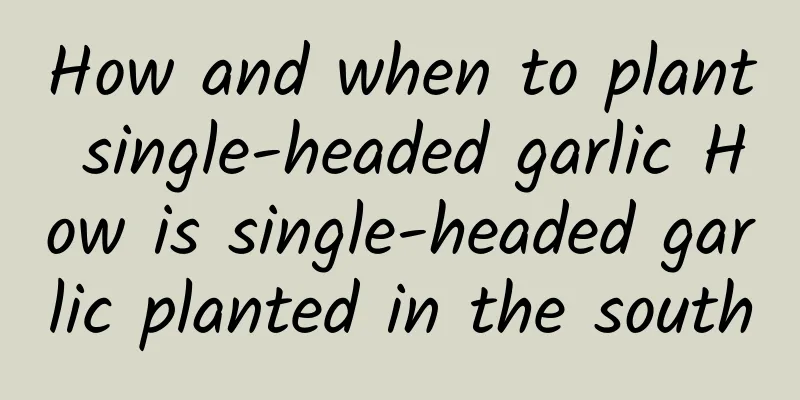What should be paid attention to in grafting to ensure the survival rate (key measures and precautions for grafting)

|
Grafting is a commonly used propagation method for fruit trees, Solanaceae vegetables, melon vegetables, flowers and other plants. It is a technique to graft branches, buds and other tissues from one plant onto the branches, trunks or roots of another plant to form a new plant after healing. The branches or buds used for grafting are called scions, and the branches, trunks or roots of the grafted plants are called stock. Let's take fruit tree grafting as an example to explain how to improve the survival rate of grafting. Fruit tree grafting has many uses, such as breeding scions and seedlings, enhancing the adaptability and resistance of trees, renewing varieties, saving aging or dying fruit trees, improving pollination conditions, and early fruiting. In the grafting of fruit trees, some have a high survival rate, while others have a low one, so some people think that it is due to the operation of the grafter, saying that he (she) is not skilled enough. To be honest, this reason does exist, but it is not the only one. The survival rate of grafting is affected by many factors. Learn about the principles of graft healing and survivalAfter grafting, the cambium of the rootstock and scion is damaged and callus tissue is produced. The callus tissue of both sides heals into one and differentiates to produce new conducting tissue. In this way, the two are connected, and water, nutrients, etc. can be exchanged with each other, thus forming a new individual, indicating that the grafting is successful. Therefore, in the process of grafting survival, the formation, growth and differentiation of callus tissue are very important to the grafting survival rate and are the main factors determining the survival rate. Factors affecting grafting survival rateThe speed of callus tissue production and connection is related not only to the characteristics of the scion and rootstock, such as affinity and nutrient content, but also to factors such as the thickness of the wrapping film, the smoothness of the cut surface, the tightness of the wrapping, temperature, humidity, and grafting technology. Specifically, it means: 1. Grafting affinityGrafting affinity means that the closer the scion and the rootstock are, the better. That is, the strongest affinity between the same species and variety is, and the higher the survival rate after grafting is. The affinity between different species of the same genus varies depending on the type of cauliflower, and the affinity between different genera in the same family is weaker. Grafting between different families and genera is basically ineffective, and the survival rate is almost zero. Grafting affinity is the key factor and basic condition for the success of grafting. 2. Environmental conditions such as temperature and humidityTemperature is closely related to whether the grafting survives. For example, the survival rate of fruit trees grafted in early spring will be low because the temperature is low in early spring, the cambium has just begun to be active, and the healing is slow. If the temperature rises too late, the germination of the scion buds is not conducive to healing and survival. For example, apples are best grafted at around 22°C, as this temperature is conducive to the formation of callus tissue in apples. Walnuts have a higher survival rate when grafted at 22-27°C, while grapes have a higher survival rate when grafted at 24-27°C. Humidity affects grafting survival in three main ways: (1) The growth of callus tissue requires a certain amount of humidity. (2) The scion can only remain active under a certain humidity. Therefore, water should be applied before and after grafting to keep the rootstock in a good moisture environment. In addition, measures such as sealing with wax, wrapping with plastic film, and burying with wet sand can be taken to ensure that the scion does not lose water. (3) The interface should be wrapped to maintain interface moisture, and it should not be untied too early. Covering the grafted plants with plastic bags is beneficial to their survival. In summer, shading and cooling the nursery will increase the survival rate of the grafted plants, while low temperature, high humidity, drought, and rainy days are not conducive to the survival of the grafted plants. 3. Quality of rootstock and scionSince healing after grafting requires sufficient nutrition to ensure, the quality of the scion and rootstock has a greater impact on the survival of the graft, especially the quality of the scion is the most important. Therefore, when selecting scions, we should choose branches with full growth and full buds as scions, and choose well-growing and sturdy rootstocks for grafting. In addition, the scion should maintain a certain humidity and temperature during storage or transportation, and should not lose its vitality due to heat, freezing, dehydration or mildew. 4. Influence of wound bleeding, gum and other substancesSome fruit trees, such as grapes and walnuts, will have wounds on the above-ground parts after root activity in spring, and sap will occur. Grafting during the sap period will affect the formation of wound callus and reduce the survival rate, so we have to avoid grafting during this period. However, some fruit trees, such as peach and apricot, are often affected in survival during grafting due to gum oozing from the wounds, thus reducing the survival rate. Some fruit trees, such as persimmon trees, have water-insoluble substances in their branches. The cut surfaces of their branches will be precipitated by these water-insoluble substances, which will affect healing and survival. 5. Grafting technologyThere is no doubt that some people's grafting skills are not very good, which will greatly affect survival. Grafting requires flatness, accuracy, speed and tightness, that is, the cut surfaces of the rootstock and scion should be flat, the cambium of both sides should be aligned, the lower end of the scion should be docked with the upper end of the rootstock, and the order cannot be reversed. The grafting operation should be fast, and the binding should be tight and strict. 6. Grafting timeAlthough grafting can be done throughout the year, the most suitable period for bud grafting is June to October, and the most suitable time for branch grafting is spring and autumn. 【 Summarize 】 The survival rate of grafting depends first on whether callus tissue is produced and whether it is produced and grows quickly. The cambium is the main site for the production of callus tissue. Therefore, in grafting technology, we must always pay attention to aligning the cambium of the scion and the rootstock. |
Recommend
How long is the growth cycle of marigold?
Introduction to Marigold Growth Marigold is often...
What to do if the fortune tree loses leaves in summer
1. Control watering Reason: We all know that the ...
Cultivation method of large-leafed radish
1. Growth habits Its flowering part is at the top...
How to grow Dieffenbachia in winter
1. Move indoors When winter comes, you should mov...
How to make golden bud flowers bloom all year round
Tips for the flowering of golden buds all year ro...
How to prune mint and how to use the pruned mint
1. Pruning during the seedling stage Mint needs t...
What are the effects of drinking osmanthus tea? How to make osmanthus tea
1. Function 1. Protect the stomach and intestines...
How often should I water Podocarpus?
How often should I water Podocarpus? Podocarpus l...
How to make the leaves of the pennywort bigger and greener (make the pennywort grow thicker and bigger)
Whether you place some rhizomes in the soil, wate...
What to do if the leaves of Tiger Pilan turn yellow
1. Reduce light exposure: Reason: If the leaves a...
How to grow plum blossoms
1. Soil: Plum blossoms have strong adaptability a...
Cabbage planting time and method
Cabbage planting time Cabbage has strong adaptabi...
Can Anthurium be exposed to the sun?
Can Anthurium be exposed to the sun? Anthurium li...
Does Patchouli prefer shade or sun?
Does Patchouli prefer shade or sun? Patchouli is ...
Breeding methods and precautions of Jingzhi Huajin
1. Maintenance methods 1. Substrate selection: Ch...









